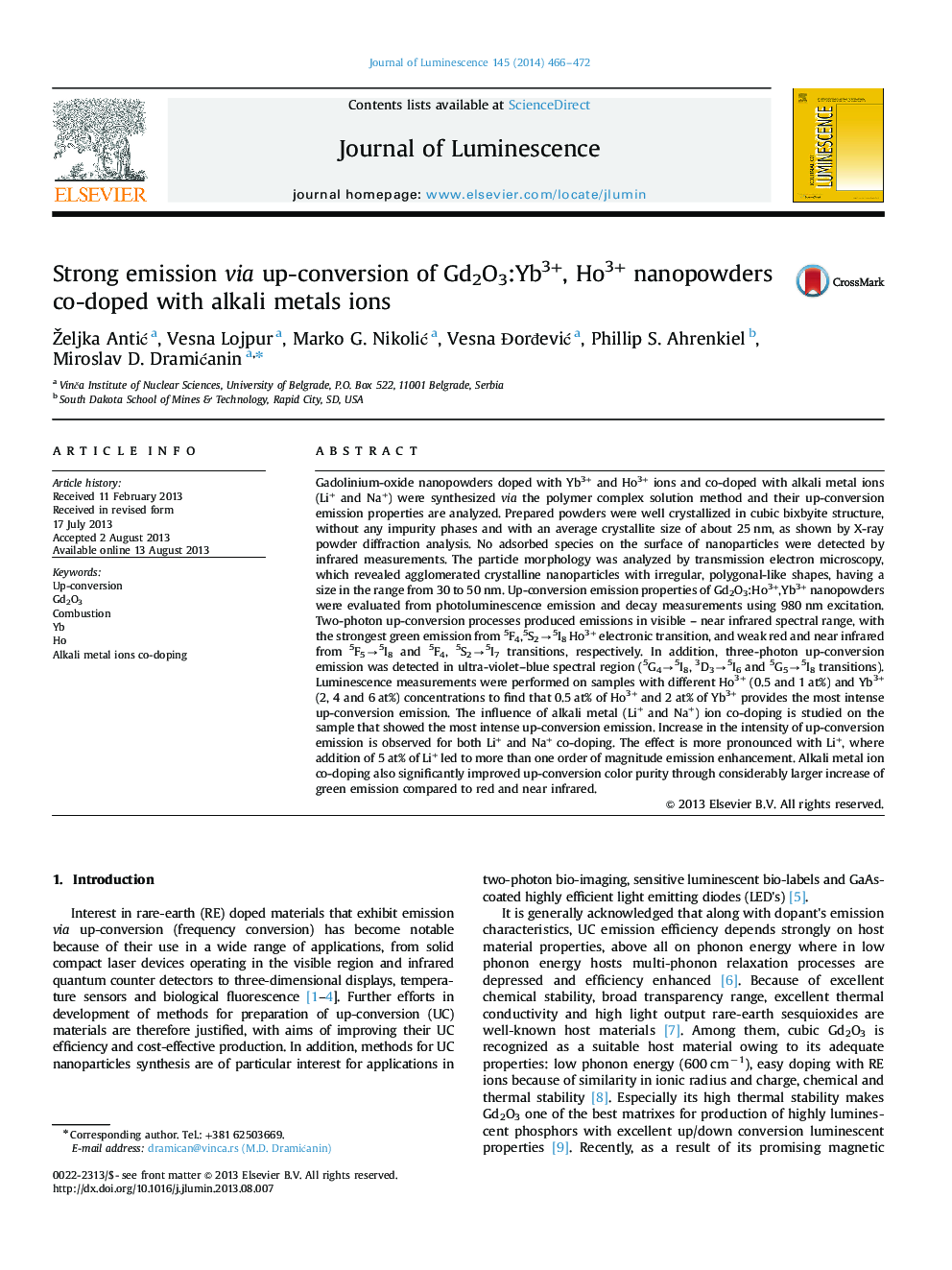| Article ID | Journal | Published Year | Pages | File Type |
|---|---|---|---|---|
| 5400203 | Journal of Luminescence | 2014 | 7 Pages |
Abstract
Gadolinium-oxide nanopowders doped with Yb3+ and Ho3+ ions and co-doped with alkali metal ions (Li+ and Na+) were synthesized via the polymer complex solution method and their up-conversion emission properties are analyzed. Prepared powders were well crystallized in cubic bixbyite structure, without any impurity phases and with an average crystallite size of about 25Â nm, as shown by X-ray powder diffraction analysis. No adsorbed species on the surface of nanoparticles were detected by infrared measurements. The particle morphology was analyzed by transmission electron microscopy, which revealed agglomerated crystalline nanoparticles with irregular, polygonal-like shapes, having a size in the range from 30 to 50Â nm. Up-conversion emission properties of Gd2O3:Ho3+,Yb3+ nanopowders were evaluated from photoluminescence emission and decay measurements using 980Â nm excitation. Two-photon up-conversion processes produced emissions in visible - near infrared spectral range, with the strongest green emission from 5F4,5S2â5I8 Ho3+ electronic transition, and weak red and near infrared from 5F5â5I8 and 5F4, 5S2â5I7 transitions, respectively. In addition, three-photon up-conversion emission was detected in ultra-violet-blue spectral region (5G4â5I8, 3D3â5I6 and 5G5â5I8 transitions). Luminescence measurements were performed on samples with different Ho3+ (0.5 and 1Â at%) and Yb3+ (2, 4 and 6Â at%) concentrations to find that 0.5Â at% of Ho3+ and 2Â at% of Yb3+ provides the most intense up-conversion emission. The influence of alkali metal (Li+ and Na+) ion co-doping is studied on the sample that showed the most intense up-conversion emission. Increase in the intensity of up-conversion emission is observed for both Li+ and Na+ co-doping. The effect is more pronounced with Li+, where addition of 5Â at% of Li+ led to more than one order of magnitude emission enhancement. Alkali metal ion co-doping also significantly improved up-conversion color purity through considerably larger increase of green emission compared to red and near infrared.
Keywords
Related Topics
Physical Sciences and Engineering
Chemistry
Physical and Theoretical Chemistry
Authors
Željka AntiÄ, Vesna Lojpur, Marko G. NikoliÄ, Vesna ÄorÄeviÄ, Phillip S. Ahrenkiel, Miroslav D. DramiÄanin,
